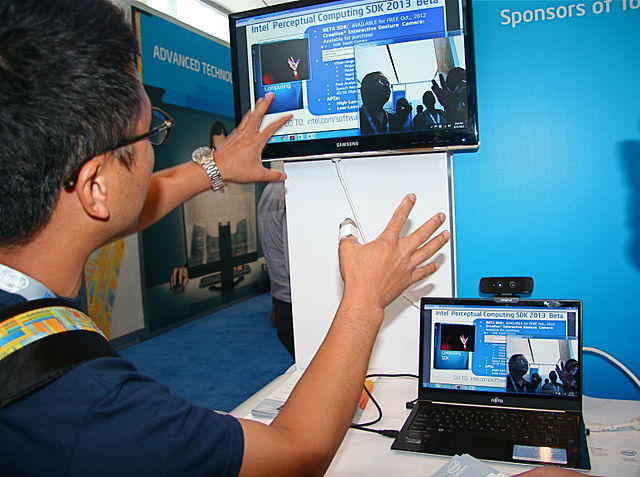

Technology companies tend to debut something new every time we turn around. One development on the rise for a few years now is gesture control technology.
What is Gesture Control Technology?
Gesture control tech enables humans to control a machine through their body motion. The user interacts with cameras, as the computer interprets the 3D motion to perform a specific function. Video game systems use the technology, allowing you to control characters with a simple point of your finger or wave of your hand. Gesture control games can recognize entire body movements. This allows the player to manipulate the game without any hand-held mechanical devices. Not just for gaming, gesture control has been developed for sign language and facial recognition for disabled persons. Likewise, speech recognition can aid the physically or mentally impaired. There are many different companies developing this type of technology and continuing to improve this sector of the industry.
Who’s on Board So Far?
Microsoft
Microsoft’s XBox Kinect sensor, coupled with the XBox gaming system, is a full body gesture control technology. With a simple wave of your hand, you activate the gaming system and control it throughout your game experience. Introduced in 2011, Kinect earned a spot in the Guinness Book of World Records as the “fastest selling consumer electronics device.” Microsoft sold 133,333 units a day during the 60-day launch period. Xbox is growing each year, now with 46 million Xbox Live members and 24 million Kinect devices sold since launch. Microsoft continues to develop new ways to use the gesture technology beyond gaming. They’ve introduced physical therapy programs and new entertainment and media controls.
Leap Motion
Leap Motion is a new USB plugin device for your Mac or PC. It allows you to control the computer using hand motions. This touch-free system provides 3D motion control over your device. The Leap Motion can “track both hands’ movement and all 10 fingers with 1/100th millimeter accuracy.” The device creates an interactive environment on your existing device that allows you to play games, read articles, flip pages, build, paint and other activities completely by gesture control.
Duo
Much like the Kinect and Leap Motion devices, the Duo is a 3D motion sensing controller. Duo puts an interesting twist on things with their Kickstarter campaign. For a $20 donation, you get a kit to assemble your own motion sensor; $140 gets you a fully assembled package. The Duo uses two Playstation Eye cameras and functions similarly to the other motion devices already in stores. The advantage is for DIY nerds, as this package allows you to adapt the Duo to your own specifications. If you are someone who likes to build and tinker with devices, this is the way to go.
Myo
Available in mid-2014, the Myo gesture control armband is a different type of sensor system. It reads hand motions and arm movements to control various devices via Bluetooth. The device works with Windows, Mac, iOS, and Android applications using sensors that measure electrical activity from your muscles to detect hand gestures. CEO Stephan Lake recognizes that brain sensors are not a fully developed technology yet, therefore muscle sensors are the next best thing. He sees opportunity in gaming control, home media devices, and even more complex industrial robotics.
Where are We Headed?
The companies listed above are making major headway in terms of gesture control technology. In the case of Xbox, it certainly is catching on quickly. Reviews for the Leap Motion devices have been so-so, with complaints about the applications and arm fatigue. Still, the innovations are promising in an industry that is branching out from gaming to more complex applications. Many people are leery of the new technology for other applications because of the clumsy and impractical devices that accompany the trend. However, as the technology gets quicker, sleeker, and better, consumers are more apt to try the gesture control. With better applications and improved technology, gesture controlled devices could be the main way that the world population interacts with their everyday devices within the next five to ten years.
—
PHOTO: Intel Free Press / CC 2.0

